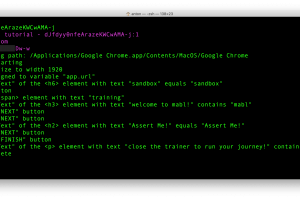In the intricate landscape of software development, protocol testing stands as a critical process to ensure that communication between various components of a system functions seamlessly. A well-structured Test Design Document (TDD) plays a pivotal role in guiding this testing phase, facilitating clear communication among stakeholders and ensuring thorough test coverage. Here’s a guide to creating a comprehensive TDD for effective protocol testing within the framework of Delta Software Solutions (DSS).
Test Objectives and Scope:
Begin by outlining the objectives of protocol testing and clearly define the scope of testing effort. Specify the protocols, interfaces, & components to be tested.
Test Strategy:
Detail the testing approach, including test environment setup, test data requirements, and testing methodologies to be employed. This serves as a roadmap for testers, ensuring consistency and uniformity in the testing process.
Test Scenarios and Cases:
Break down the testing scenarios, enumerating various communication scenarios and interactions between components. Create test cases that cover both positive and negative scenarios, encompassing boundary conditions and error handling.
Test Execution Flow:
Present a step-by-step flow of the testing process. This includes the sequence of actions, interactions, and expected outcomes at each stage. Clarity in the execution flow is essential for accurate and repeatable testing.
Test Data and Environment:
Specify the test data requirements, including sample inputs, expected outputs, and any specific configurations required for successful testing. A well-defined test environment reduces ambiguity and ensures consistent results.
Test Metrics and Reporting:
Outline the metrics to be collected during testing, such as response times, error rates, and throughput. Additionally, define the format and frequency of test reports to keep stakeholders informed of progress and issues.
Risk Assessment:
Identify potential risks and challenges associated with the protocol testing process. Develop contingency plans to mitigate these risks and ensure smooth testing.
Collaboration and Communication:
Detail the communication channels and frequency of interactions among team members, developers, and stakeholders. Effective collaboration ensures that issues are addressed promptly.
Sign-Off Criteria:
Establish the criteria that must be met for the protocol testing phase to be considered complete. This ensures alignment with project goals and paves the way for progression to the next phase.
In the dynamic world of software development, a well-structured Test Design Document for protocol testing is indispensable. It serves as a comprehensive reference point, guiding testers, developers, and stakeholders through the testing process. By adhering to these guidelines, DSS can elevate its protocol testing endeavors, delivering robust software solutions that excel in performance and reliability.




